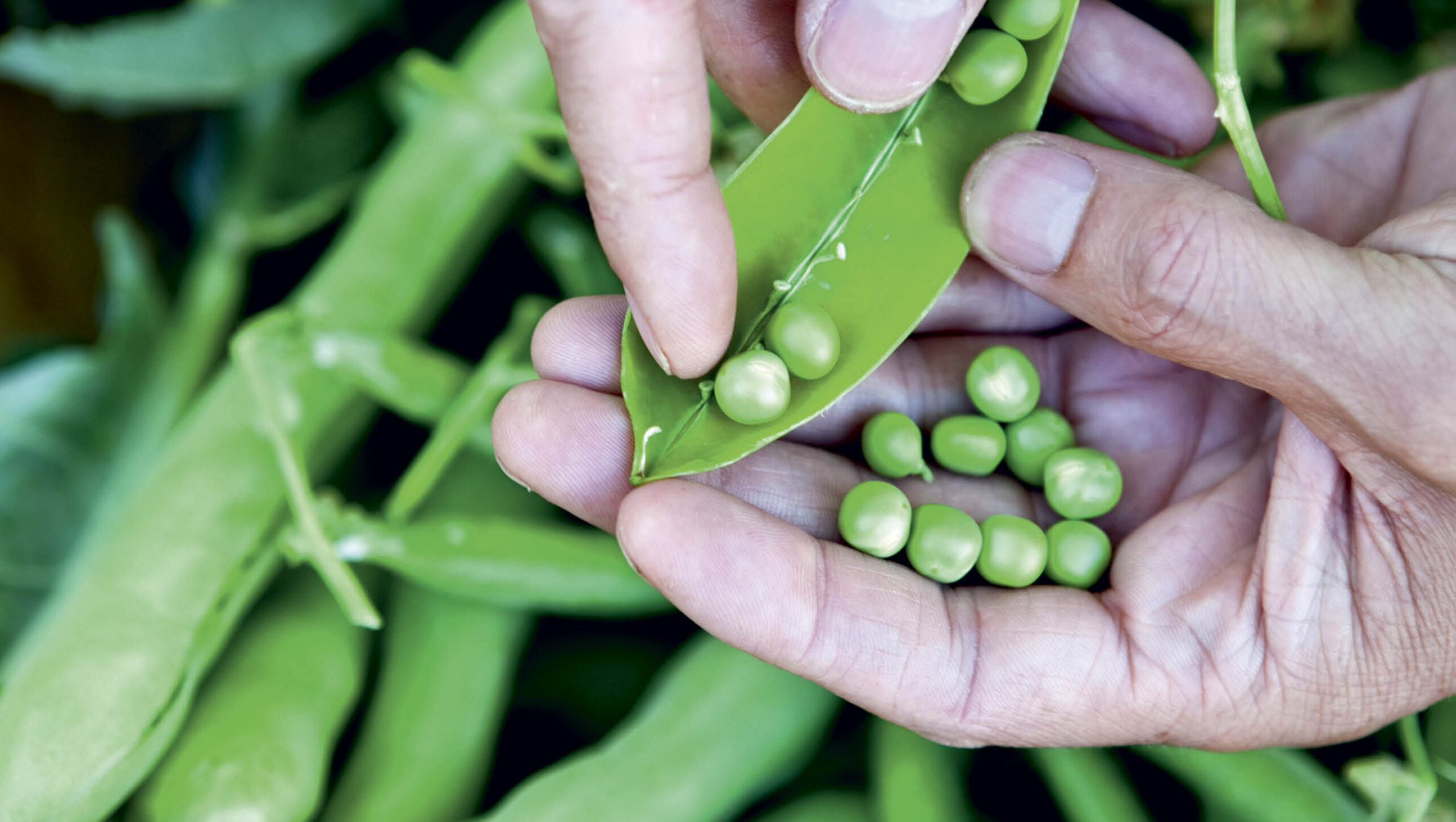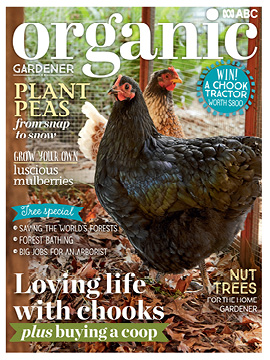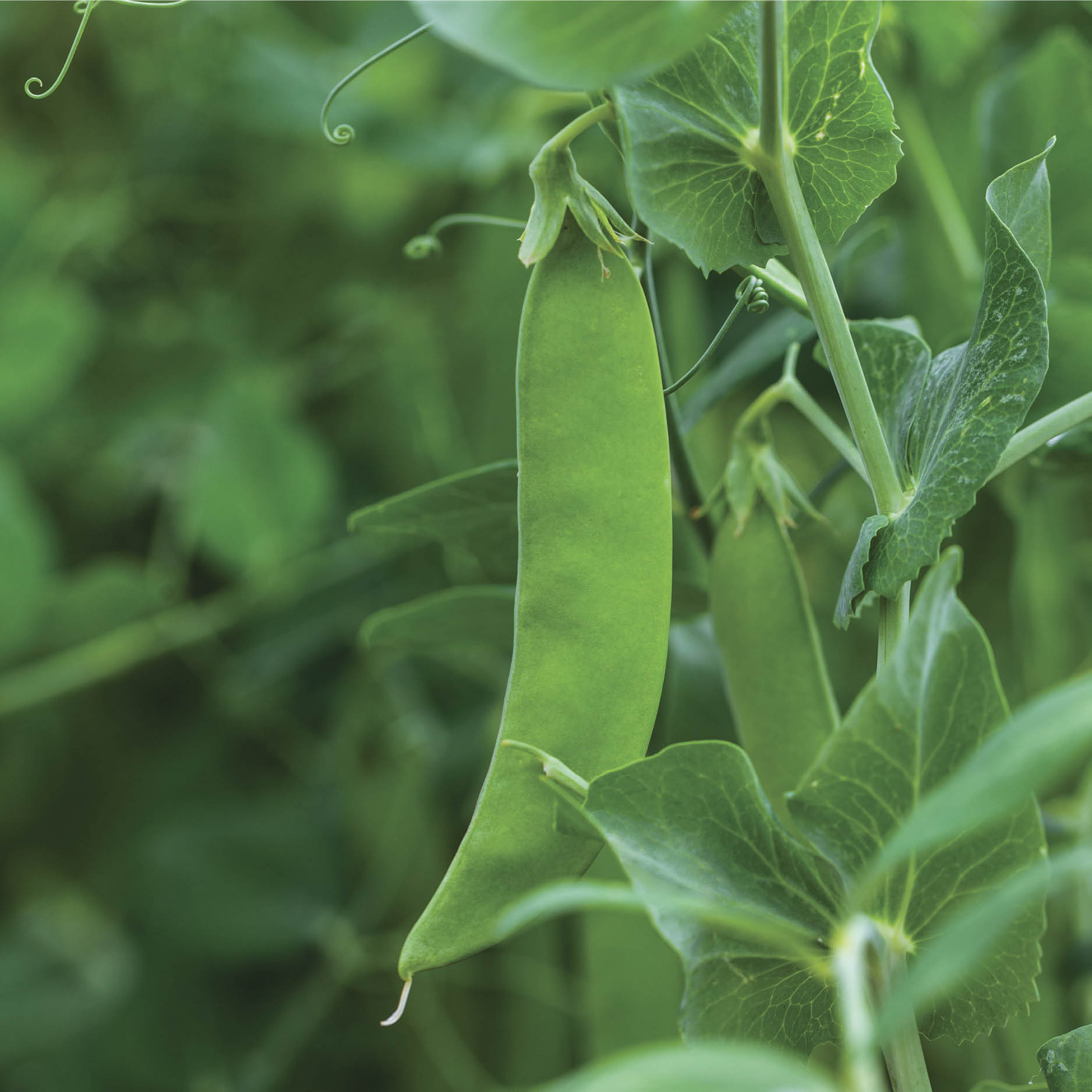Planting peas from seed
2022-07-04T04:32:26+10:00
Peas are one of the most obliging vegies to grow from seed, but a bit of planning helps to ensure they'll provide you with an abundant harvest.
There are a range of heirloom varieties for you to pick from that will soon become your kitchen garden favourite.
Peas (Pisium sativum) can be grouped into a number of distinct types of peas.
• Snow peas: The whole pod is eaten when the peas inside are quite small and flat.
• Podding peas: Are removed from their hard pods when plump and round.
• Sugar snap: These are halfway between snow peas and podding peas, and eaten pod and all when the peas and pods are rounded.
• Drying types: Some peas are also suitable for drying for use as a winter legume, in soups or slow-cooked meals.
Planting time
Peas are grown as a cool-weather crop, with warm weather halting flowering. In southern mainland warm-temperate regions, peas are sown in autumn and winter and grown through winter to flower and pod as soon as the weather starts to warm. They are often finished off by the first hot spell of spring or mid-spring.
In Tasmania, peas are sown in spring, after the worst of the cold weather and the risk of frost has passed, and will usually produce a harvest into summer, enjoying the more consistently milder weather of that state.
Frosts can damage plants, so protect them with frost cloth.
In milder, warm-temperate regions (including Sydney), snow peas will produce earlier than in southern states and can sometimes be cropped in autumn as well as spring. Further north in South East Queensland and the subtropics, peas can be planted in winter for a spring harvest, although are not recommended for tropical growing.
Planting seed
Peas are one of the most obliging things to grow from seed. Prepare your patch by removing any previous crops or weeds, and loosening soil to a depth of 20cm or more with a fork, broadfork or shovel, avoiding turning soil over if possible. Test your soil pH before adding anything. Peas prefer a not too acid to slightly alkaline soil, with a soil pH of around 6, up to 7.5, so adjust your soil with sulphur or lime according to your result as per instructions in the kit.
Pea plants don’t like being transplanted, so it’s best to sow seeds directly, rather than sowing in punnets and then moving into the garden. However, you can use biodegradable pots or pre-sprout seed. If you don’t have time you can give nursery-bought seedlings a go – just don’t expect wonders.
Plant seeds by poking them into the soil up to your first knuckle, about 2–3cm deep. Firm the soil gently over the top of the seed with a little reassuring pat and water gently but thoroughly. Don’t water again until after they’ve sprouted to avoid rotting. Pea seeds are a great first seed for children to plant, being easy to hold.
Sprouts usually appear in a week or so and will need protection from garden pests, including birds, earwigs, slugs and snails. Protect seedlings with plastic pots with the bottom cut out, pushed into the soil around each plant. Plastic pots can be re-used for this purpose many seasons over, as their plastic is UV stabilised. Remove the container once the plant is sturdy.
Seed saving
Saving pea seeds to grow again is easy. Peas are self-pollinating plants and will grow true to type if one variety is separated from another by one tall row of a different crop, so you can safely grow a couple of types in your garden and still collect seeds. Leave a few of the best seed pods on the best plants to fully ripen, waiting until they are dry and brown before picking them when the dew has dried, and not during or just after rain, to avoid mould.
To make sure seeds are completely dry before storing, remove the pods and lay seeds out to dry on some paper, or dry them in a paper bag, for a few days in a dark, airy place. Once dried, put seeds in a container in the freezer for 48 hours to kill off any weevil eggs (which can decimate pea seeds in storage with pin-prick holes drilled through them).
Pea seeds are viable for three years if kept in a cool, dark, airy place, but many will still germinate after double that time. Take care to label your seeds with the variety name and the date of collection. I also like to add the expected use-by date for easy reference in my seed cupboard. A good reference is the chart in The Seed Savers’ Handbook.
Karen’s full article about peas first appeared in the Winter 2021 (#126) issue. There’s a selection of back issues available here — you can also subscribe and get the most recent issues delivered to your door!








